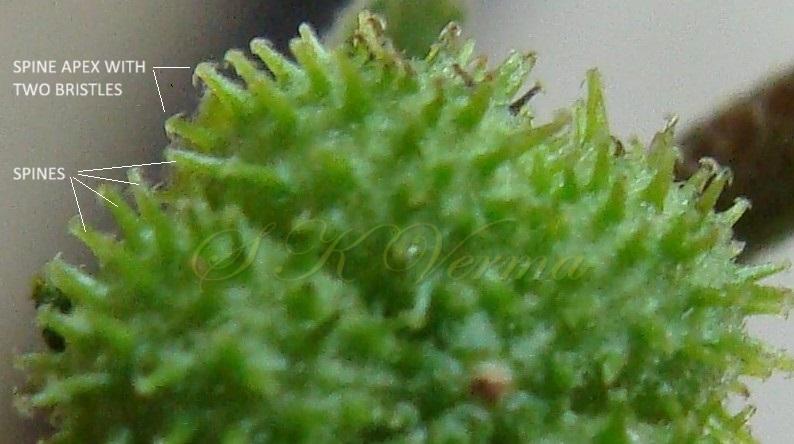URENA
Urena
Dill. ex L. Sp. Pl. 692. 1753; Gen. Pl. 5: 309. 1754; 1867; Masters in Hook. f., Fl. Brit. India 1: 329. 1875; Hutch., Gen. Fl. Pl. 2: 566. 1967; Fl. China @ eFloras.org 12: 280; Fl. North Amer. @ eFloras.org vol. 6; Fl. Pak. @eFloras.org. p.92.
Erect, annual or perennial herbs to undershrubs, densely stellate pubescent, sometimes mixed with simple hairs. Leaves alternate; leaf shape and size variable; leaf blade orbicular or ovate, angular, sinuate, lobed or parted, with 1 or more prominent foliar nectaries on midrib beneath. Flowers actinomorphic, bisexual, pentamerous, hypogynous, solitary or nearly fascicled, rarely raceme-like, axillary or rarely aggregated on twig tips, sessile or short pedicelled. Epicalyx segments 5, fused to middle or above, campanulate, 5-lobed, adnate to calyx. Calyx 5-parted. Petals 5, stellate-pubescent abaxially. Staminal tube truncate or slightly incised; anthers numerous, on outside of staminal column only, nearly sessile. Carpels 5, ovary 5-locular, one ovule per loculus; style branches 10, reflexed; stigmas discoid, apically ciliate. Fruit a schizocarp, subglobose, mericarps 5, ovoid, usually with spines, each with a cluster of short barbs at tips. Seed 1 per mericarp, obovoid-trigonous or reniform, glabrous.
7 species
Urena lobata
Urena lobata
L., Sp. Pl. 692. 1753; Masters in Hook. f., Fl. Brit. India 1: 329. 1875; Maheshwari, Illustr. Fl. Delhi. f. 27. 1966; Dhaliwal & Sharma, Fl. Kullu Dist. 170. 1999; Singh & Sharma, Fl. Chamba Dist. 197. 2006; Parker, For. Fl. Punj. ed. 1: 39. 1918 (Reprint 1973); Fl. China @ eFloras.org 12: 281; Hill, Fl. North Amer. @ eFloras.org vol. 6; Fl. Pak. @ eFloras.org p. 92.
Herbaceous or woody, erect, annual or perennial, 60-180 cm high, stem and branches densely stellate pubescent, mixed with simple hairs. Leaves very much variable, reduced distally, usually broader than long, up to 11 cm x 15 cm, orbicular or ovate, cordate, 3-10 lobed (generally 3-lobed), lobes acute or acuminate, sometimes nearly obsolete, soft hairy on both surfaces (abaxially grey-stellate puberulent and adaxially puberulent), margin serrate to crenate, paler beneath, base 5-7-nerved, nerves prominent beneath, the central or midrib only with an oval glandular pore; petiole 1.2-15 cm long, petioles equalling blades proximally, reduced distally to 1/4th blade length, hairy; stipules linear or filiform, ca. 2 mm long, caducous. Flowers actinomorphic, bisexual, pentamerous, hypogynous, solitary, slightly aggregated, axillary. Pedicels ca. 3 mm, woolly. Epicalyx 5, ca. 6 mm long, adnate to calyx, united at base into a cup, clothed with rigid hairs, oblong or lanceolate, equalling the calyx. Calyx cup-shaped, deeply divided, lobes 5, less than 6 mm long, lanceolate, ciliate or stellate puberulent, caducous. Corolla 1.2-2.5 cm across, bright pink with a darker center, petals 5, connate below and adnate to staminal tube, obovate, ca. 1.5 cm long, abaxially stellate puberulent. Staminal tube ca. 15 mm long, 5-dentate apically, glabrous, anthers nearly sessile on the staminal tube. Carpels 5, ovary 5-locular, one ovule per loculus; style 10-branched, branches slender, reflexed; stigmas capitate, hairy. Fruit schizocarp, flattened globose, ca. 1 cm in diameter, mericarps 5, rounded on the back, densely stellate hairy, covered with blunt spines, each spine having 2 straight bristles pointing downwards at an angle from the apex (hooked spines). Seeds 3-5 mm.
Common Names: Caesarweed, Aramina, Bur Mallow, Cadillo, Congo Jute, Cousin Mahoe, Guaxima, Hibiscus Burr, Pink Burr, Urena Burr; Bachita, Lapetua, Vilaiti San (Hindi)
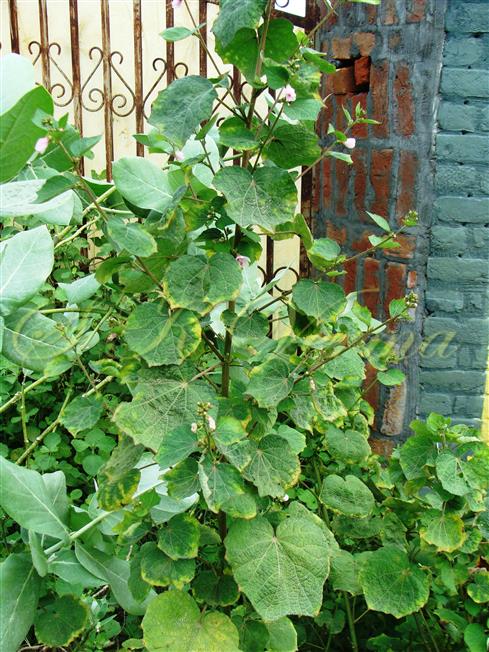
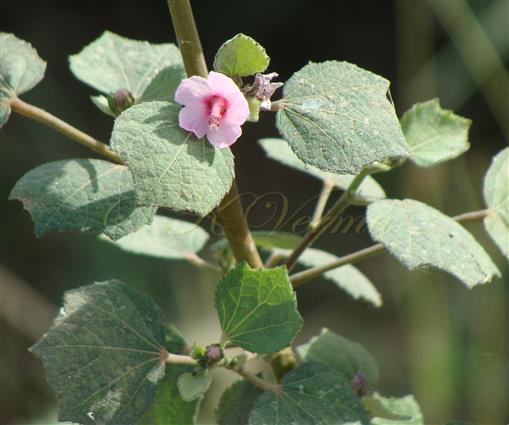
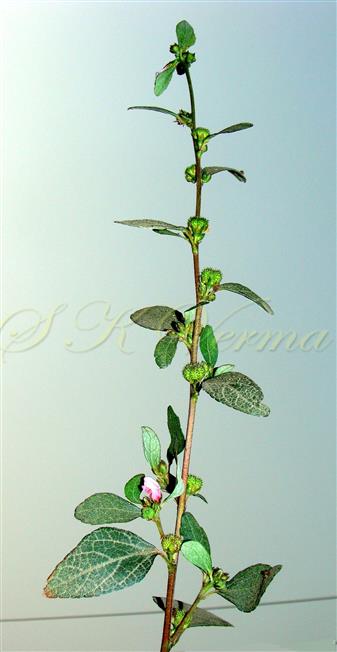
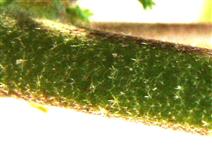
-DSC01434.jpg)
-DSC01433.jpg)
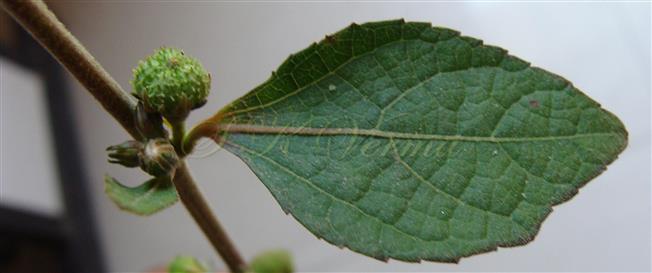

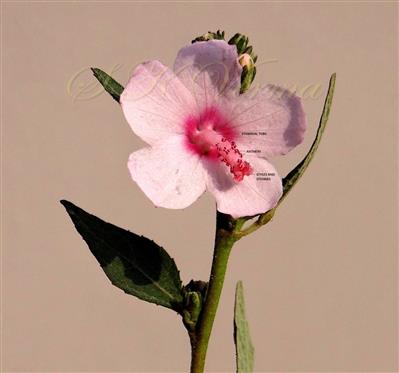
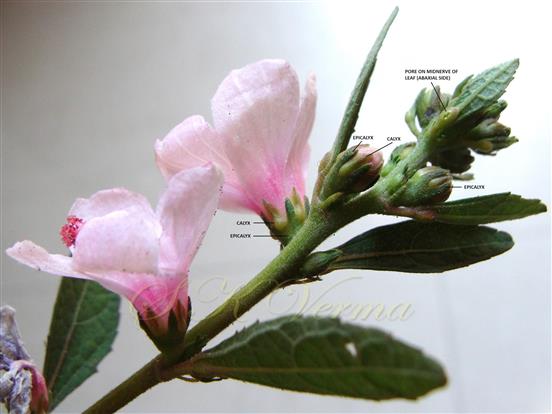
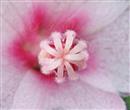
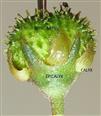
 with persistent calyx and epicalyx-1201.jpg)
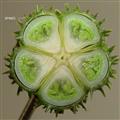






-DSC01434.jpg)
-DSC01433.jpg)






 with persistent calyx and epicalyx-1201.jpg)

